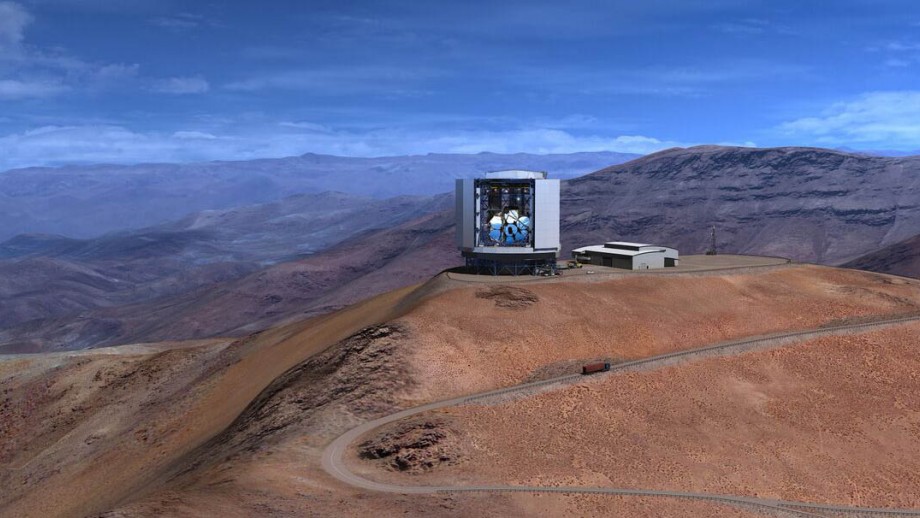Australia to play a key role in Giant Magellan Telescope

Australian scientists and industry will play a key role in an international collaboration to build the world's most powerful optical telescope after the Giant Magellan Telescope (GMT) passed a major construction milestone.
The 11 international partners, including ANU and Astronomy Australia Limited (AAL), have approved construction of the GMT, unlocking more than US$500 million to start building the first new generation extremely large telescope in Chile.
When fully operating, the GMT will look further out into space and back in time than any telescope ever built, and will produce images 10 times sharper than those from the Hubble space telescope.
"The Giant Magellan Telescope will provide astronomers and astrophysicists with the opportunity to truly transform our view of the universe and our place within it," said Professor Matthew Colless, Director of the ANU Research School of Astronomy and Astrophysics (RSAA) and Vice Chair of the GMT Organization Board.
The ANU and AAL will have a 10 percent share of the US$1 billion project. That will ensure Australian astronomers and scientists will be able to use the GMT and remain at the forefront of astronomy and astrophysics research.
"Australian industry will also play a key role in building some of the new high-technology equipment at the heart of the Giant Magellan Telescope," Professor Colless said.
"The next generation of optical telescopes such as the GMT demand a new class of astronomical instrumentation and facilities, and the ANU is well equipped to meet this challenge."
Professor Colless said the GMT Integral Field Spectograph is being designed and built by ANU researchers and engineers at RSAA. The spectrograph will record spectra from each point across the field of view simultaneously and take full advantage of the telescope's light-collecting power and high resolution.
Australian instrument scientists at ANU will also develop and build key elements of the crucial adaptive optics system for the GMT. Adaptive optics remove distortions in images, such as twinkling stars, caused by turbulence in the Earth's atmosphere.
AAL Chair, Nobel laureate and astrophysicist Professor Brian Schmidt, said the Giant Magellan Telescope would open up a new era in astronomy and allow scientists to look back in time to shortly after the big bang.
"The Giant Magellan Telescope will help astronomers unlock secrets of the Universe and will herald a new era of discoveries," Professor Schmidt said.
AAL's representative on the GMT Science Advisory Committee, Professor Chris Tinney of the University of New South Wales, said the telescope could help find habitable planets.
"The GMT will play a leading role in the international race to identify planets orbiting stars near the Sun that could host life and potentially reveal the signatures of biological processes," he said. "The first years of GMT's operations will be an incredibly exciting time."
Images, video graphics, and a video news release on the Giant Magellan Telescope construction announcement are available on their website.
Australia's involvement in the GMT Project has been possible due to a $93 million contribution from the Commonwealth Government through the Education Investment Fund and National Collaborative Research Infrastructure Strategy.
The Giant Magellan Telescope partners are: Astronomy Australia Ltd., The Australian National University, Carnegie Institution for Science, Harvard University, Korea Astronomy and Space Science Institute, Smithsonian Institution, Texas A&M University, The University of Arizona, The University of Chicago, The University of Texas at Austin, and Fundação de Amparo à Pesquisa do Estado de São Paulo.
